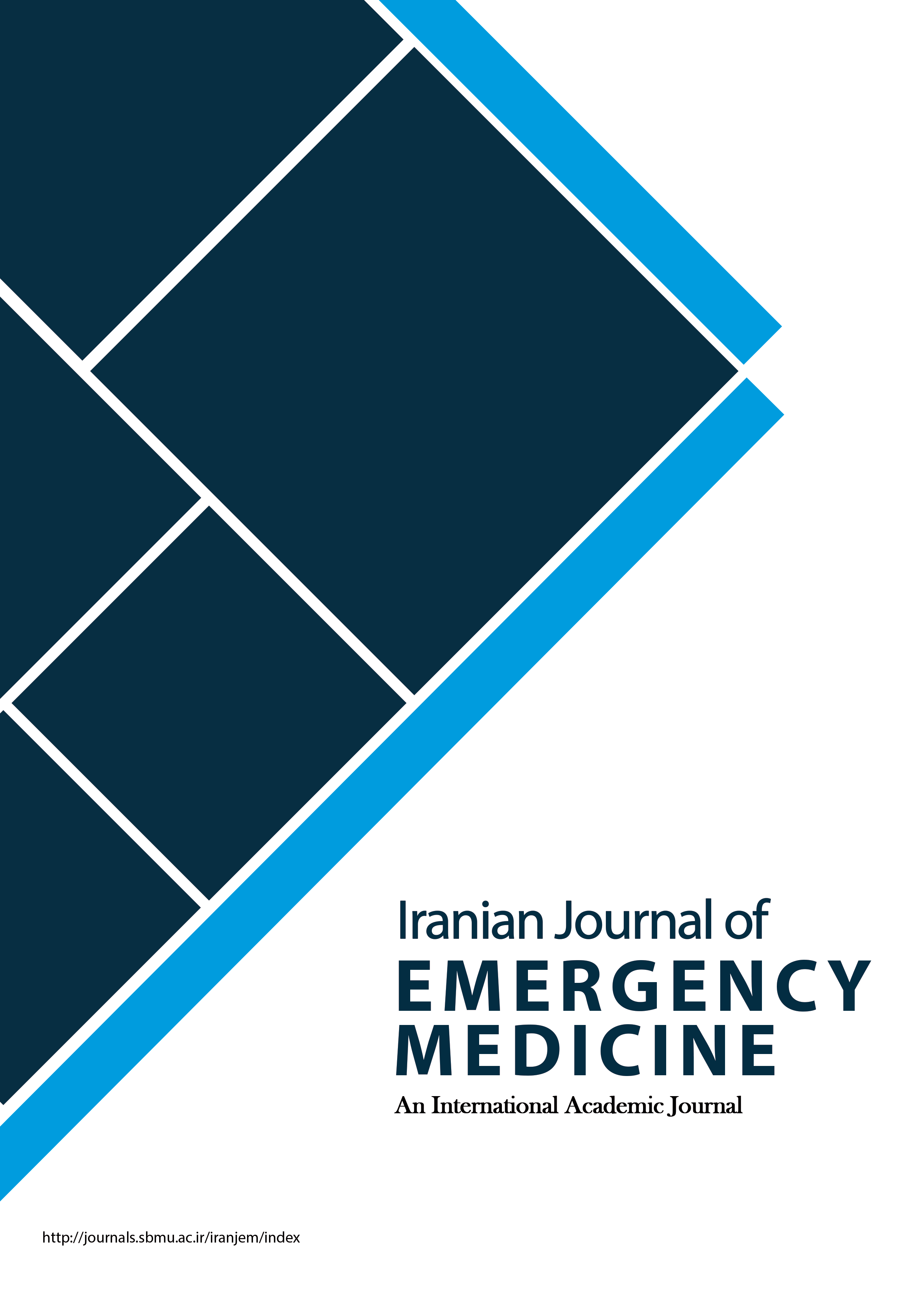Trauma from Violence and Strife among Patients Referred to the Emergency Department; an Epidemiologic Study
Iranian Journal of Emergency Medicine,
Vol. 4 No. 1 (2017),
21 December 2016,
Page 14-9
https://doi.org/10.22037/ijem.v4i1.13932
Introduction: Strife is one of the most important health threatening happenings that leads to more than 0.5 million deaths each year, and is among the most important causes of mortality in youth. Studying it can increase knowledge on its resulting traumas and be a base for supervising these crimes. Therefore, the present study aimed to evaluate the epidemiology of strife cases presenting to emergency department (ED). Methods: The present study is a retrospective cross-sectional one that evaluates the epidemiology of strife and violence in those presenting to the ED of Imam Hossein Hospital, Tehran, Iran, during April 2014 to January 2016. The studied variables included age, sex, time of visit, social history of the patient, trauma mechanism, anatomical site of trauma, measures taken, and final outcome. Results: 499 patients with the mean age of 26.4 ± 8.7 were studied. 442 (88.6%) were male and 443 (88.9%) were of Iranian nationality. Based on the obtained results, 321 (64.4%) were single and 335 (67.1%) were in the 20-29 years age group. 317 (87.3%) cases had negative social habits (smoking, drinking,…) and cigarette was the most commonly used substance in cases with positive social habits. The highest frequency of ED visits happened between 4PM and 12AM (49.7%), on weekdays (73.1%), and in spring (41.9%). 283 (56.7%) of the studied cases had visited ED following penetrating trauma and 240 (48.1%) needed some kind of surgical intervention. Finally, 398 (79.8%) cases were discharged with full recovery, 81 (16.2%) were discharged against medical advice, and 4 (0.8%) died. Conclusion: Based on the findings of the present study, prevalence of trauma due to strife was 16 in each 1000 visits to the trauma unit of the studied center. Most cases of strife happened in men, singles, those aged 21-30 years, in spring, on weekdays, in the evening and with penetrating trauma and about 80% were discharged from ED with full recovery.



